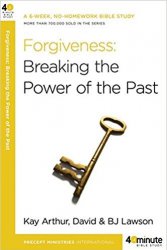
Determining What Scripture Says
How to Study Your Bible by Kay Arthur
 We have been students of Precept-Upon-Precept Bible Studies from Precept Ministries International for many years. We have learned so much from these studies of which most have been written by Kay Arthur or written by Kay with a co-writer. Each study includes a Video lecture by Kay Arthur or someone on her staff (many times her son, David Arthur). In our class we would come to class early and watch Kay’s video, and then following that, our teacher would arrive and we would go over the Lesson from our homework and discuss it in depth with the rest of the group. The method of study is called Inductive Bible Study.
We have been students of Precept-Upon-Precept Bible Studies from Precept Ministries International for many years. We have learned so much from these studies of which most have been written by Kay Arthur or written by Kay with a co-writer. Each study includes a Video lecture by Kay Arthur or someone on her staff (many times her son, David Arthur). In our class we would come to class early and watch Kay’s video, and then following that, our teacher would arrive and we would go over the Lesson from our homework and discuss it in depth with the rest of the group. The method of study is called Inductive Bible Study.
Below is a summary of what is entailed in learning God’s Word using this methodology as written by Kay Arthur in her book How to Study Your Bible and Lord, Teach Me to Study the Bible in 28 Days, and through her other Bible Studies and documented on her website. The following info is taken from her books or from the Precept website and includes my own remarks.
I. The First Step is Observation
Observation basically means to READ the Scripture. Observing or reading the Scripture tells us what the Word says. It is necessary to read before we can interpret or apply the Scripture.
If we were to study a Chapter in a book of the Bible for example: 1 Peter 5, we would:
Begin with prayer
When we study the Bible, we have the opportunity to learn directly through God’s Spirit. Before beginning, we should always ask God to lead us and guide us in our study. We recognize that it is only through God’s grace and His Holy Spirit, that we will discover exactly what God is wants us to hear from Him.
Ask the “5 W’s and an H”
As we study any passage of Scripture, we should always ask: Who? What? When? Where? Why? How? These questions are the building blocks which will lead us to correct and accurate interpretation of the Word.
Mark key words and phrases
A key word is one that is essential to the text. They are important! Key words and phrases are repeated many times in the Scripture. It is very apparent, if you really take note of it, many words are repeated multiple times in a Chapter or Book of the Bible. For example, notice that some form of the word suffering is used three times in 1 Peter 5. Key words can be marked using symbols, colors, or a combination of the two.’ I typically circle all those words that are repeated multiple times or where some form of the word is used over and over again. If God says it over and over again, it MUST be IMPORTANT! Why don’t we pay attention?
Make lists
Making lists can be very enlightening as you study. Lists reveal truths and highlights important concepts. 1 Peter 5:2-3, for example, contains a simple list regarding the role of the elder, shown by numbering the items in the text. It is also helpful to make a list of what you learn about each keyword or person you mark. Kay has you do this in almost all of her Bible Studies.

Watch for contrasts and comparisons
‘Contrasts and comparisons paint word pictures to make it easier to remember what you’ve learned. Peter compares the devil to a roaring lion in verse 8. Peter also contrasts God’s attitude toward the proud and the humble.’
Note expressions of time
Noting “time” will help you see the sequence or timing of events and lead to accurate interpretation of Scriptures. Many times the Scripture says ‘after these things’, meaning after the previously mentioned things occur.

Mark terms of conclusion
Words such as, therefore, thus and for this reason, indicate that a conclusion or summary is being made. You will want to mark them in a special way. The expression we use when we see a paragraph start with the word, Therefore’, is What is that there for?

II. The Second Step is to Interpret Scripture Accurately
Interpretation means what does the text say?
While observation leads to an accurate understanding of what the Word of God says, interpretation goes a step further and helps you understand what it means.
As you seek to interpret the Bible accurately, the following guidelines will be helpful:
Context rules! Do not take the Scripture out of Context!
‘The word “context” means that which goes with the text. If you lay the solid foundation of observation, you will be prepared to consider each verse in light of the surrounding verses, the book in which it is found, and the entire Word of God. As you study, ask yourself: Is my interpretation of this passage of Scripture consistent with the theme, purpose, and structure of the book in which it is found? Is it consistent with other Scripture about the same subject? Am I considering the historic and cultural context? Never take a Scripture out of its context to make it say what you want it to say. Discover what the author is saying; don’t add to his meaning.’
Always seek the full counsel of the Word of God.
‘When you know God’s Word thoroughly, you will not accept a teaching simply because someone has used one or two isolated verses to support it. Those verses may have been taken out of context or other scriptures overlooked or ignored that would have led to a different understanding. As you read the Bible more extensively, you will be able to discern whether a teaching is biblical or not. Saturate yourself in the Word of God; it is your safeguard against wrong doctrine.’

Remember that Scripture will never contradict Scripture!
‘The best interpretation of Scripture is Scripture. Remember, all Scripture is inspired by God. It is God breathed; therefore, Scripture will never contradict itself. Sometimes, however, you may find it difficult to reconcile two seemingly contradictory truths taught in Scripture, such as the sovereignty of God and the responsibility of man. Don’t take a teaching to an extreme that God doesn’t. Simply humble your heart in faith and believe what God says, even if you can’t fully understand or reconcile it at the moment.’

Don’t base your convictions on an obscure passage of scripture
‘An obscure passage is one in which the meaning is not easily understood. Because they are difficult to understand they should not be used as a basis for establishing doctrine.’
Interpret Scripture literally
‘The Bible is not a book of mysticism. God spoke to us that we might know truth. Therefore, take away the Word of God at face value – in it’s natural, normal sense. Look first for the clear teaching of Scripture, not a hidden meaning.’
Look for the single meaning of the passage
‘Always try to understand what the author had in mind when you interpret a portion of the Bible. Don’t twist verses to support a meaning that is not clearly taught. Unless the author indicates that there is another meaning to what he says, let the passage speak for itself.’
III. Apply Scripture Practically
Application: How does the meaning of the text apply to life?
‘The first step in application is to find out what the Word of God says.
We can learn what the Word of God says on any particular subject through accurate observation and correct interpretation of the text.
Once you understand what the Word of God teaches, you are then obligated before God to accept that truth and to live by it.’
Please leave a comment below. We welcome your thoughts! Have a blessed day!
Please note that by submitting a comment you are also consenting to us storing your info from this submittal in our records. We will not furnish this information to any third parties. It is just stored in case we need to contact you.
Clicking on the links to Kay Arthur’s books will take you to a site where you may purchase the books. If you purchase from the links we may receive a small commission.





